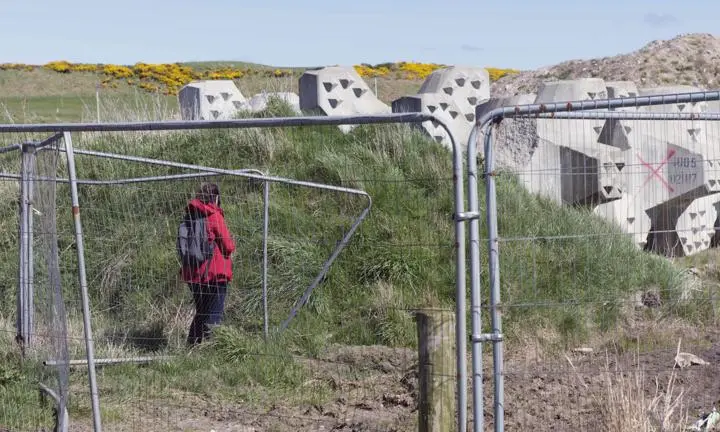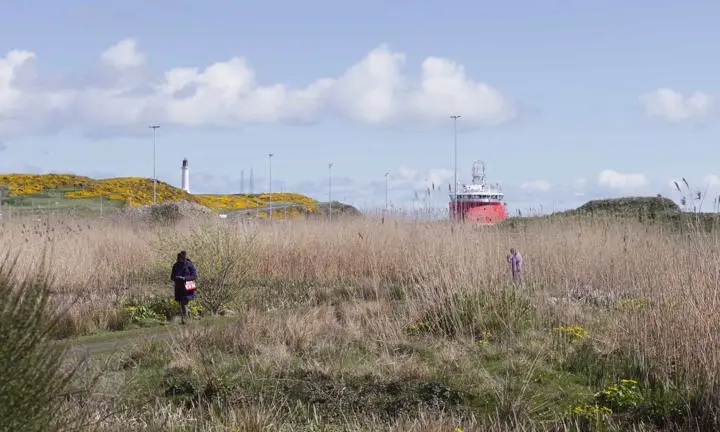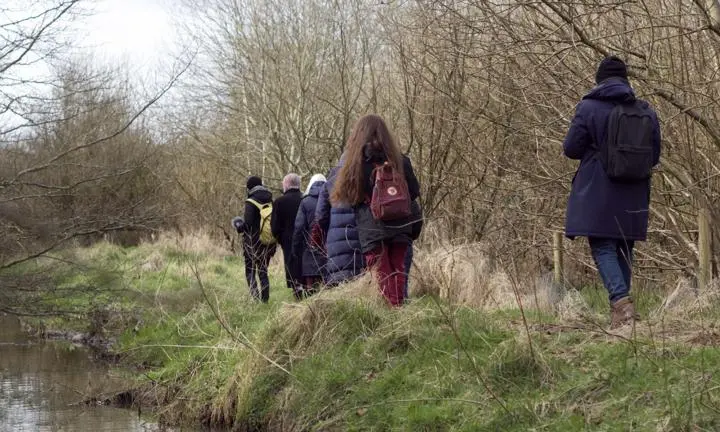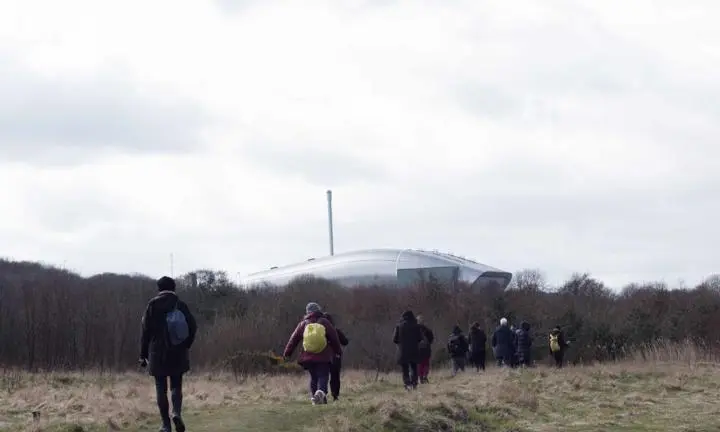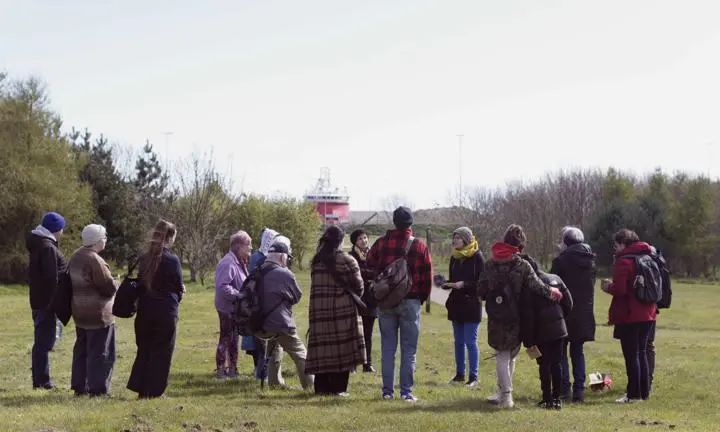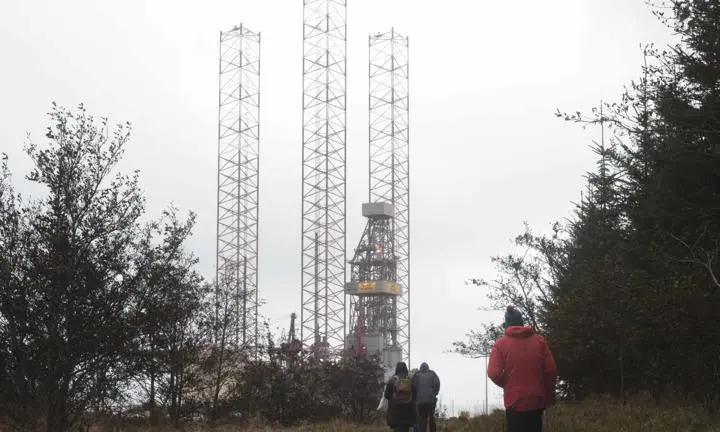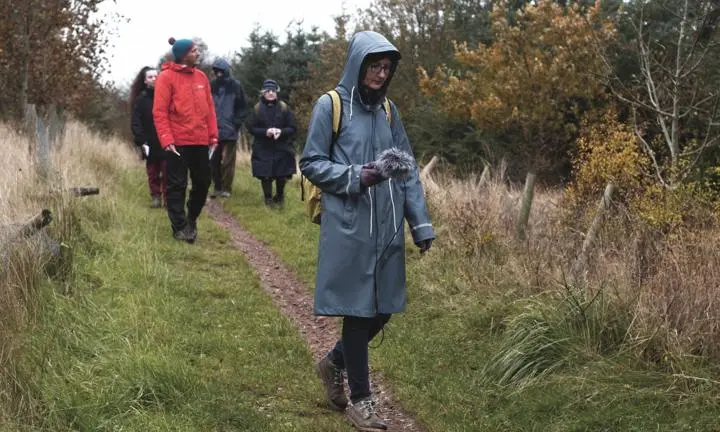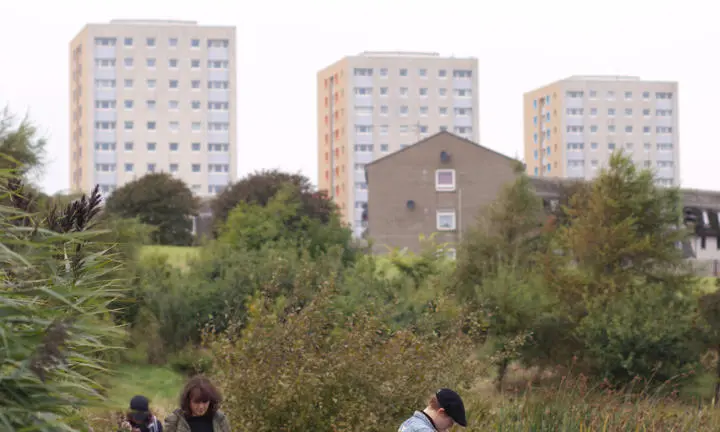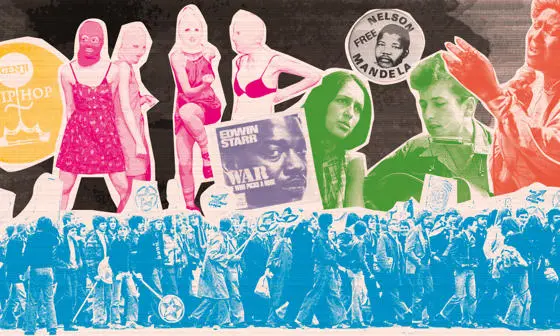Soundwalking the energy transition: will Aberdeen's clean energy ambitions damage its local community?
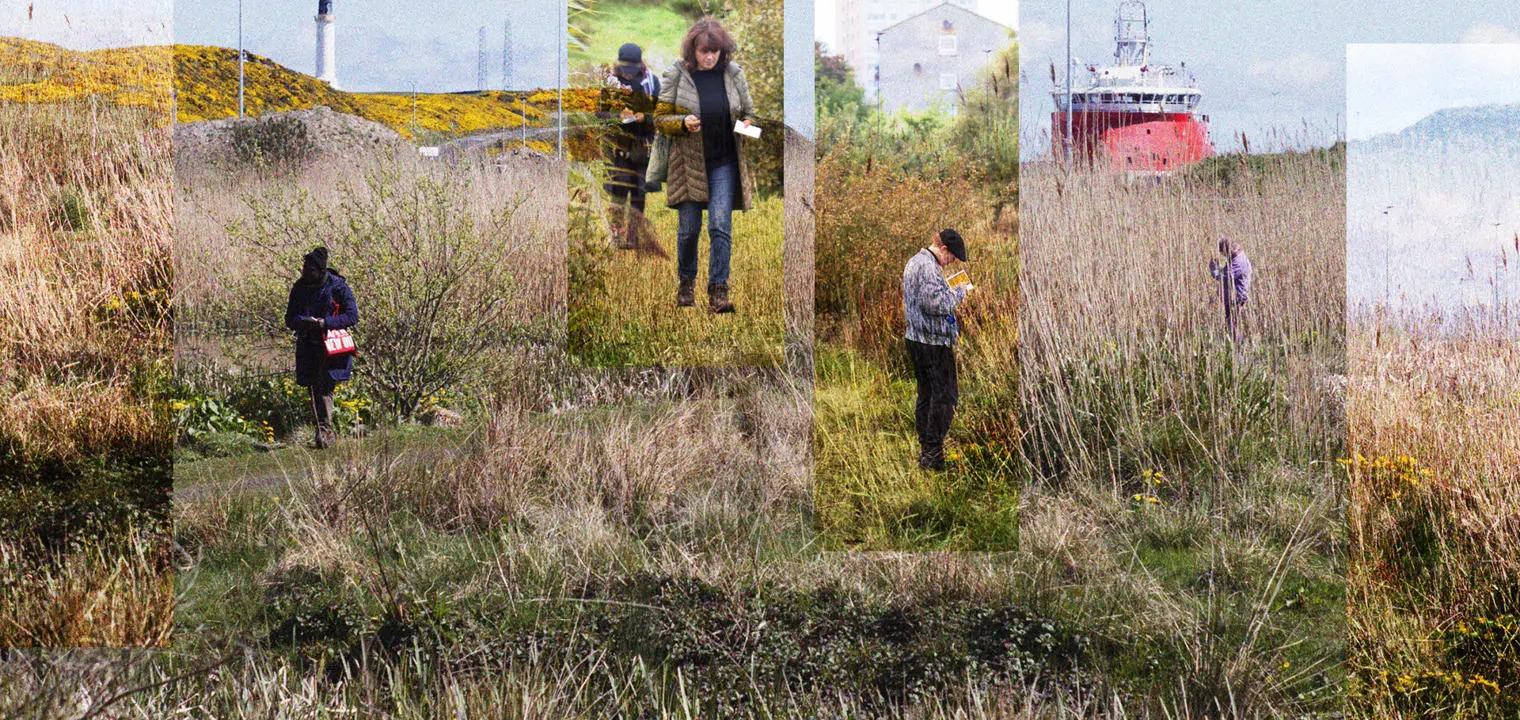
Contents
Aberdeen – the centre of the UK’s oil and gas industry in the North Sea – has grand plans. A new Energy Transition Zone (ETZ), currently in development, is a bid to "create a new globally recognised green energy cluster", which is expected to become the largest dedicated energy transition complex in Scotland. But while few would argue against the city’s aim to become a global leader in sustainable energy, concerns have been raised over the environmental damage the zone’s creation, and continued operation, may have on those most local to it.
Current plans, campaigners argue, will cause lasting damage to St Fittick’s Park – the last open green space in Torry, Aberdeen – shrinking the park and bringing the noises of industry closer to local residents. The fight, which has seen campaigners win an injunction for a Judicial Review of current plans, highlights the danger that, without effective consultation, projects like the ETZ may result in reinforcing current inequalities. Campaigners and residents lament that their perspectives and concerns have been dismissed by the City Council and ETZ Ltd., the not-for-profit agency leading the development. The ETZ project, they argue, is therefore an instantiation of longstanding and persistent inequities and disenfranchisement in the city, which are now reproduced through energy transition developments.
It is these issues that the Living with the Energy Transition project, a creative collaboration between Dr Gisa Weszkalnys, Associate Professor in the Department of Anthropology at LSE, Dr William Otchere-Darko, Lecturer and Researcher in Urban Planning at Newcastle University, Aberdeen-based artist Dr Maja Zećo and curator Rachel Grant, is seeking to explore. Building on previous research by Dr Weszkalnys and Dr Otchere-Darko, the project brings art and academia together, using soundwalks and reflective workshops to examine the impacts of Aberdeen’s energy transition on those living in the city.
Thinking towards energy transitions needs to not just be about alternative fuels, it also needs to be about cultural transitions and where power is held.
Aberdeen – an energy powerhouse
"There’s been a lot of enthusiastic talk about turning Aberdeen into a renewable energies capital, but it quickly became clear through my earlier research that this wasn't going to be simple or straightforward," says Dr Weszkalnys.
"Proposals are threatening this important green space, and for many in the local community, the ETZ is an example of an unjust transition. This fight around St Fittick’s Park has expressed all these kinds of tensions and strains."
Rachel Grant agrees: "The oil and gas industry shapes a lot of things in Aberdeen, from historically high rents, which mean that artists can’t stay, to institutions like Aberdeen Art Gallery that are funded via oil sponsorship.
"Thinking towards energy transitions needs to not just be about alternative fuels, it also needs to be about cultural transitions and where power is held. This project was born out of wanting to develop a picture of the uneven and varied impacts of the energy industries."
For many in the local community, the ETZ is an example of an unjust transition.
The sounds of industry
To develop this picture, the team have taken a novel approach, using sonic, visual and collaborative methodologies to explore the impacts of life in an industrialised environment.
"Sound is interesting to think about because it's not visible but is very difficult to contain. It almost possesses objects – it goes through architecture, through spaces, through territories," explains contemporary artist and researcher Dr Zećo.
"We don’t usually pay attention to how our acoustic environment affects us, but that doesn’t mean it doesn’t have any impact. This is especially the case with industrial noises – hums of specific frequencies and noises present for prolonged periods of time have harmful effects on people and biodiversity."
"We wanted to do an artist-led research programme as a way of opening up new kinds of dimensions that our traditional social science qualitative methods might not easily get to," elaborates Dr Weszkalnys. "For me, this collaboration has been an interesting learning curve – and a way to think differently about the issues that need to be explored to ensure a just energy transition."
Soundwalks open up complexities that we are not often aware of – - there is always a discovery.
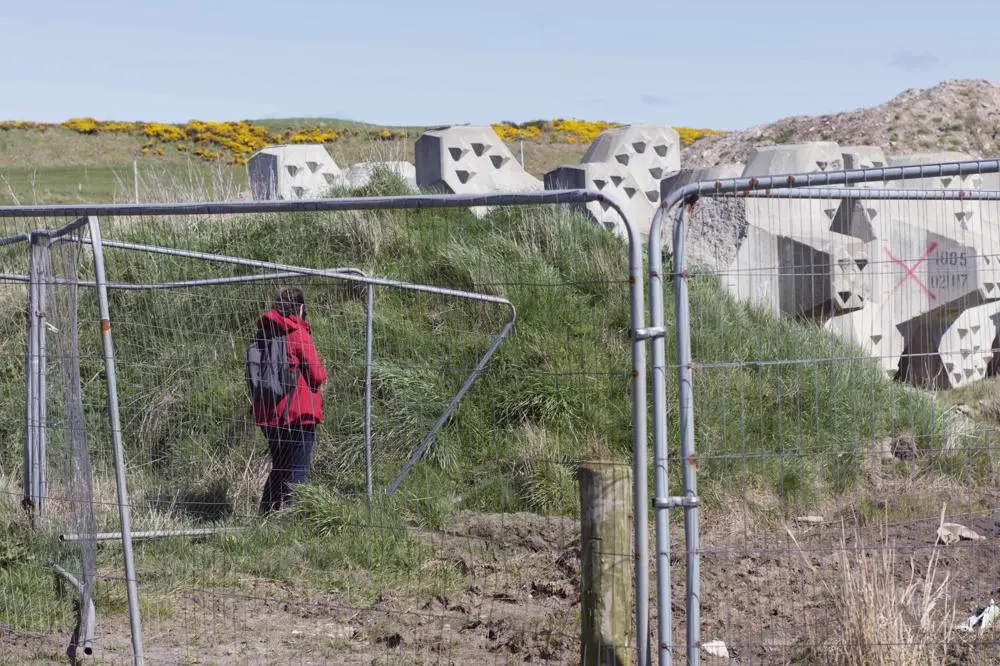
What can we learn through soundwalking?
The project expands on findings from Dr Weszkalnys’s previous research. However, instead of using arts-based methods simply to illustrate this work, it seeks to develop critical perspectives of its own. To do so, this innovative project is designed around a series of soundwalks. Artworks in and of themselves, each of the four walks has been designed to encourage walkers to focus on the sounds of their environment.
"Soundwalks are artworks in a public space that are activated through walking. They’re about increasing our appreciation and awareness of our acoustic environment," explains Dr Zećo.
"What we learn through soundwalking is how people individually engage with the soundscapes through the lens of their own personal experiences and memories. And so soundwalks open up complexities that we are not often aware of – there is always a discovery, so you can go to one site and listen to it again and again and find all these new nuances."
The walks have attracted people of all ages – from toddlers to older people – from the local community and beyond. They were followed by a concluding workshop exploring participants’ experiences and providing valuable insight to feed into discussions around how people experience the politics that shape their lived environments through sound.
"My hope is that, by the end of the walk and workshop, our participants have become a bit more sensitised to the sonic impacts in their environment and to the changes in those sonic environments – so these become an empowering tool," says Dr Zećo.
Helping communities and policymakers ensure a just transition
How much consideration policymakers currently give to the sonic impacts that energy transition zones and similar developments will create for local communities is unknown, but the team hopes to raise awareness of this issue and feed their findings into wider policy discussions.
"Coming from different disciplines, we have a lot of reflection to do as a team in terms of digesting the results," concludes Rachel Grant.
Feedback from participants suggests that the soundwalks were both artistic events in and of themselves and will shape the ways people relate to their environment in the future. The team now plans to develop a publication and an exhibition of written, visual and sound material gathered during the project, which will make its insights available to a wider public.
With the fate of St Fittick’s Park still to be determined, there are many more discussions to be had around how Aberdeen can ensure its transition towards renewable energy does not put industrial and economic imperatives above the needs of those living closest to it. Discussions Dr Weszkalnys, Rachel Grant and Dr Zećo look forward to feeding into.
Dr Gisa Weszkalnys, Rachel Grant and Dr Maja Zećo were speaking to Jess Winterstein, Deputy Head of Media Relations at LSE.
Images: Phoebe McBride
Download this article as a print-optimised PDF [267KB].
